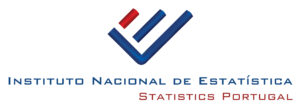Portugal’s tech sector faces an escalating crisis landscape, with cyberattacks increasing 36% from 2021-2023 Observador and the country’s largest-ever GDPR fine of €4.3 million imposed in 2022. GDPRhub

Tech companies operating in Portugal must navigate a complex regulatory environment while managing crises in a relationship-centric culture that demands transparency and personal accountability.
The Portuguese crisis management framework differs significantly from other European markets. While northern European countries favor data-driven, impersonal crisis responses, Portuguese stakeholders expect warm, relationship-focused communications that acknowledge personal connections. This cultural expectation, combined with stringent EU regulations implemented through Portuguese authorities, creates unique challenges for tech brands facing crises.
Recent high-profile incidents demonstrate the stakes: Vodafone Portugal’s 2022 cyberattack disrupted services for 4.7 million customers, The Record / SecurityWeek while media giant Impresa faced a ransomware attack that hijacked its entire digital presence. Threatpost / Cybernewsgroup
These cases reveal both the sophistication of threats and the importance of culturally-adapted crisis responses in the Portuguese market.
The Portuguese regulatory landscape demands swift action
Tech companies in Portugal face a multi-layered regulatory framework that requires immediate response during crises. The CNPD (Comissão Nacional de Proteção de Dados) enforces GDPR with particular vigor, Consumidor mandating data breach notifications within 72 hours Cnpd +2 and imposing fines up to €20 million or 4% of global turnover for serious violations. EDPB

ANACOM oversees telecommunications and digital services with specific requirements for critical infrastructure. Companies managing Class A assets (affecting over 100,000 users) must maintain 24/7 contact points and dedicated security response teams. Major service disruptions affecting 100,000+ users for just one hour trigger mandatory notifications within 60 minutes of impact.
Portuguese consumer protection laws add another layer of complexity. Since 2022, tech products carry 3-year warranties (extended from 2 years), with the burden of proof on sellers for the first two years.Digital products and services face identical warranty requirements creating potential crisis scenarios around product defects or service failures that might not constitute crises in other markets.

The regulatory coordination between CNPD, ANACOM, and the National Cybersecurity Centre (CNCS) means tech crises often involve multiple authorities simultaneously. Companies must prepare for parallel investigations and potentially conflicting requirements from different regulators, each with their own notification timelines and documentation demands.
Recent crises reveal vulnerability patterns across Portuguese tech
Analysis of major tech crises in Portugal from 2020-2025 reveals escalating sophistication and impact. The Vodafone Portugal cyberattack in February 2022 stands as a watershed moment – the deliberate attack knocked out 4G and 5G networks entirely, affecting millions and demonstrating critical infrastructure vulnerabilities.

The Instituto Nacional de Estatística (INE) case resulted in Portugal’s largest GDPR fine to date: €4.3 million for illegally transferring census data of 6 million citizens to US-based Cloudflare without adequate safeguards. This precedent established CNPD’s willingness to impose maximum penalties, particularly for international data transfers and processing of sensitive data categories.

Media conglomerate Impresa’s ransomware attack during New Year 2022 showed how quickly reputational crises escalate in Portugal’s interconnected business environment. The Lapsus$ group hijacked not just websites but social media accounts, using them to mock the company and declare themselves “president of Portugal” – highlighting how technical incidents become public spectacles requiring careful communication management.
Banking institutions face ongoing sophisticated phishing campaigns that exploit Portuguese customers’ trust in traditional institutions. These coordinated attacks demonstrate that financial services and telecommunications remain primary targets, with criminals adapting their approaches to Portuguese communication styles and banking practices.
The most alarming trend emerges from a 2024 breach exposing 3.5 billion records of Portuguese users across major platforms. This massive breach, resulting from infostealer malware, underscores the interconnected nature of modern tech crises where single vulnerabilities cascade across multiple services and millions of users.
Crisis communication must balance warmth with transparency
Portuguese crisis communication requires a fundamentally different approach than Anglo-Saxon or Northern European models. The culture’s emphasis on “confiança” (trust) and personal relationships means crisis responses must acknowledge existing connections while demonstrating genuine concern for affected stakeholders. Efacont
Successful crisis communication in Portugal follows a clear hierarchy: employees first, then customers and partners, followed by local communities and authorities, with national media and international stakeholders addressed last. This relationship-centric approach differs markedly from markets where media or regulators might receive priority attention.
Language choices carry particular weight. All crisis communications must be Portuguese-first, with English versions only for international stakeholders. Excessive use of English terms or “corporate speak” signals disconnection from local values. Companies must use clear, accessible Portuguese that demonstrates respect for the local culture while maintaining professional credibility.
Traditional media maintains surprising influence compared to other European markets. Television networks (RTP, SIC, TVI) and established newspapers (Público, Expresso) often drive crisis narratives more than social media. Facebook dominates social platforms with 4.7 million users, requiring integrated strategies that coordinate traditional and digital channels rather than prioritizing one over the other.
The Portuguese expectation for executive visibility during crises cannot be overstated. CEOs and senior leaders must take personal responsibility and maintain visible presence throughout crisis resolution. This cultural norm reflects Portugal’s hierarchical business traditions where leadership accountability serves as a proxy for organizational trustworthiness.
Cultural factors shape every aspect of crisis response
Portugal’s high-context communication culture means audiences read between the lines of crisis messaging. What remains unsaid often communicates as much as explicit statements, requiring companies to be particularly explicit about intentions, commitments, and limitations during crises.
The influence of family-owned businesses in Portugal’s economy creates different stakeholder dynamics than in markets dominated by public corporations. Many Portuguese companies must consider family reputation alongside corporate brand, adding complexity to crisis decision-making and requiring more nuanced stakeholder management.
Regional sensitivities matter more than many international companies realize. Communication strategies that work in Lisbon or Porto metropolitan areas may fail in rural regions where traditional values and communication preferences differ significantly. Companies must avoid assuming uniform national responses to crisis messaging.
Trust, once broken, proves exceptionally difficult to rebuild in Portuguese business culture. Efacont Unlike markets where corporate crises fade quickly from public memory, Portuguese stakeholders maintain long memories for betrayals of trust. This cultural characteristic elevates the stakes for initial crisis responses and underscores why relationship-focused communication remains essential.
The growing transparency movement, exemplified by initiatives like the “Mais Transparência” portal, signals evolving expectations that blend traditional Portuguese values with modern accountability demands. Transparency
Companies must navigate this transition carefully, maintaining warmth and relationship focus while meeting increasing demands for openness and data accessibility.
A comprehensive framework for managing tech crises in Portugal
Effective crisis management in Portugal requires integrating multiple frameworks while adapting to local context. The Situational Crisis Communication Theory (SCCT) provides initial response guidance, but Portuguese applications must emphasize relationship maintenance over pure reputation management.
Crisis severity assessment in Portugal must account for regulatory thresholds that trigger mandatory responses. Critical crises (affecting national security or involving mass data breaches) require immediate C-suite activation and same-day notification to authorities. High-severity incidents demand 24-48 hour regulatory notification with controlled media engagement. Medium and low-severity issues allow more measured responses but still require careful stakeholder consideration.
The stakeholder management matrix for Portuguese tech crises prioritizes differently than international frameworks suggest. Primary stakeholders include CNPD, ANACOM, CNCS, and affected individuals – but the Portuguese emphasis on relationships means employees and local communities often require equal attention to regulators. Secondary stakeholders like media and competitors play important roles but should not drive initial response strategies.
Response timelines follow predictable patterns: immediate containment and assessment (0-24 hours), regulatory notification and public communication (1-7 days), investigation and recovery (1-4 weeks), and long-term compliance demonstration (1-6 months). Portuguese crises often extend longer than in other markets due to relationship repair requirements and regulatory follow-through expectations.
Companies must prepare for parallel regulatory investigations from multiple authorities. CNPD may investigate data protection aspects while ANACOM examines service continuity and CNCS evaluates cybersecurity measures. This multi-track regulatory response requires sophisticated internal coordination and consistent external messaging across all authorities.

Tech crisis management in Portugal demands a sophisticated understanding of local culture, regulatory requirements, and stakeholder expectations that differ markedly from other European markets. RD Station The combination of stringent EU regulations, relationship-centric business culture, and evolving transparency expectations creates a complex environment where standard international crisis playbooks often fail.
Success requires Portuguese-first communication strategies that balance warmth with professionalism, rapid regulatory compliance with careful stakeholder management, and modern transparency with traditional relationship values. Companies must invest in understanding Portuguese cultural nuances while maintaining operational readiness for increasingly sophisticated technical threats.
The escalating frequency and severity of tech crises in Portugal, from the Vodafone cyberattack to the INE data protection violation, demonstrate that no company remains immune. Those who prepare thoroughly – understanding both regulatory requirements and cultural expectations – position themselves to navigate crises while maintaining the trust that Portuguese business culture values above all else.
